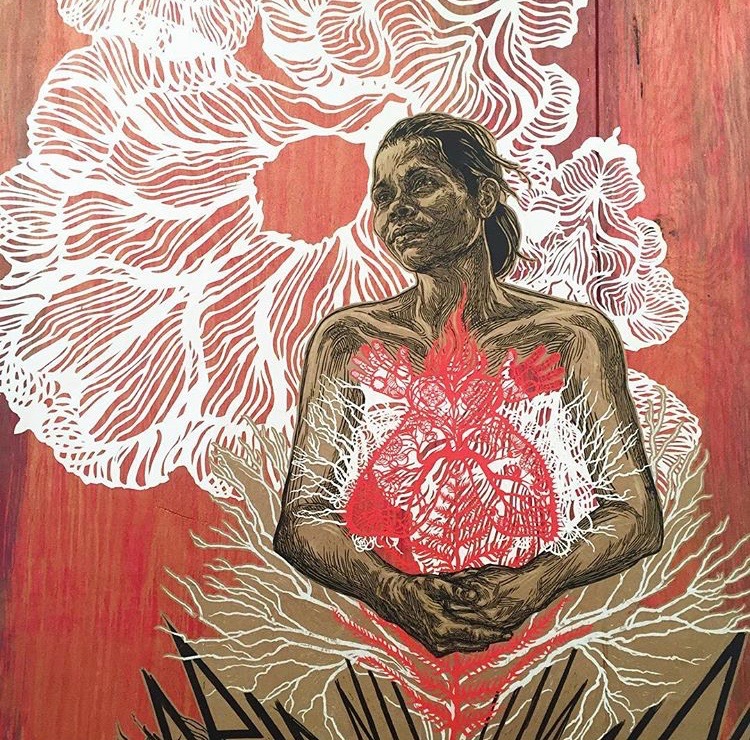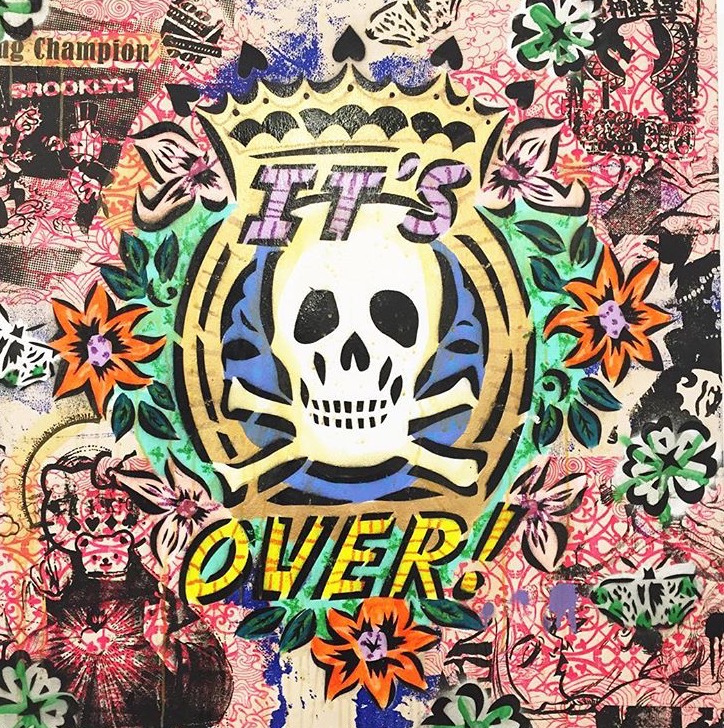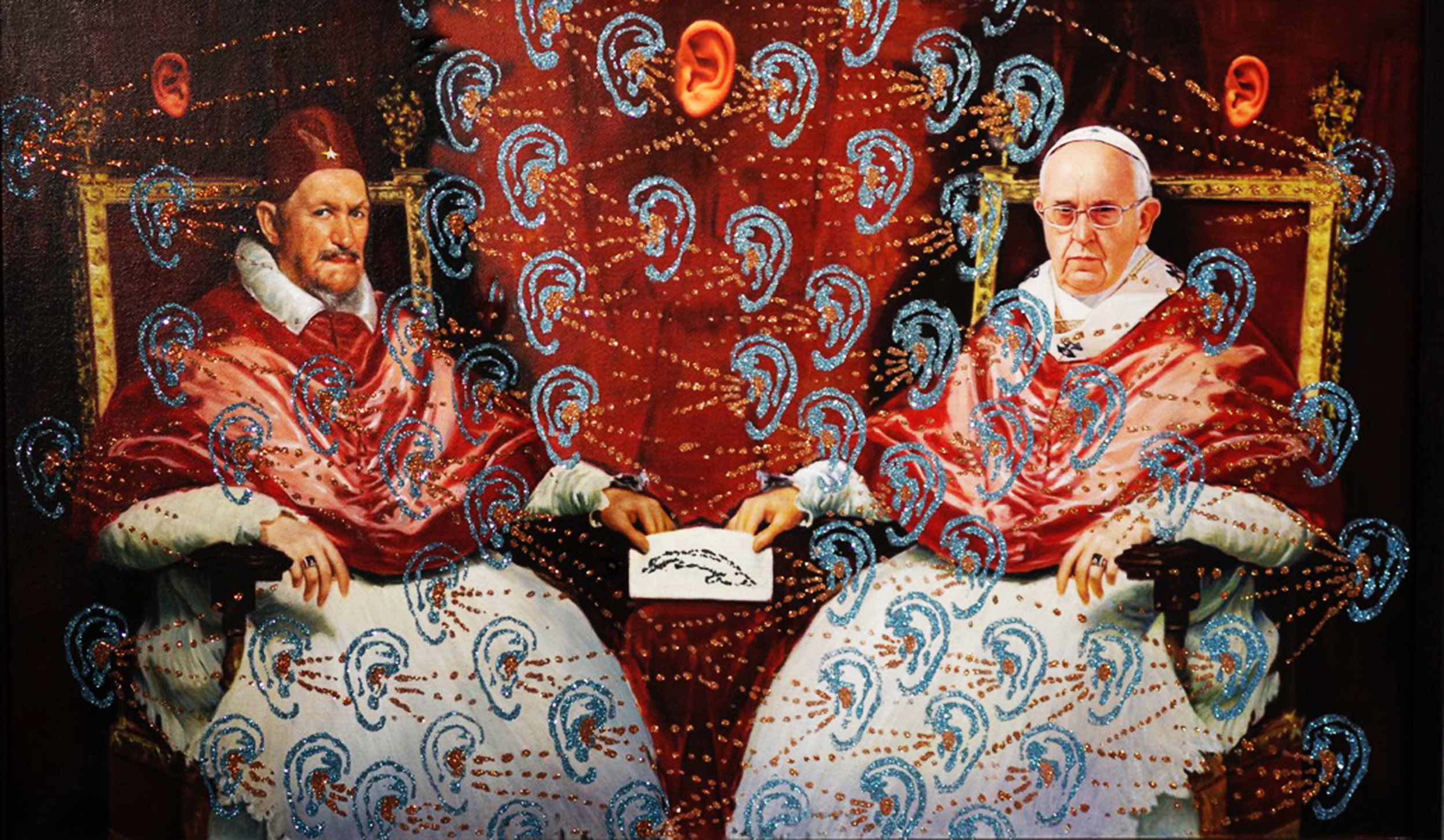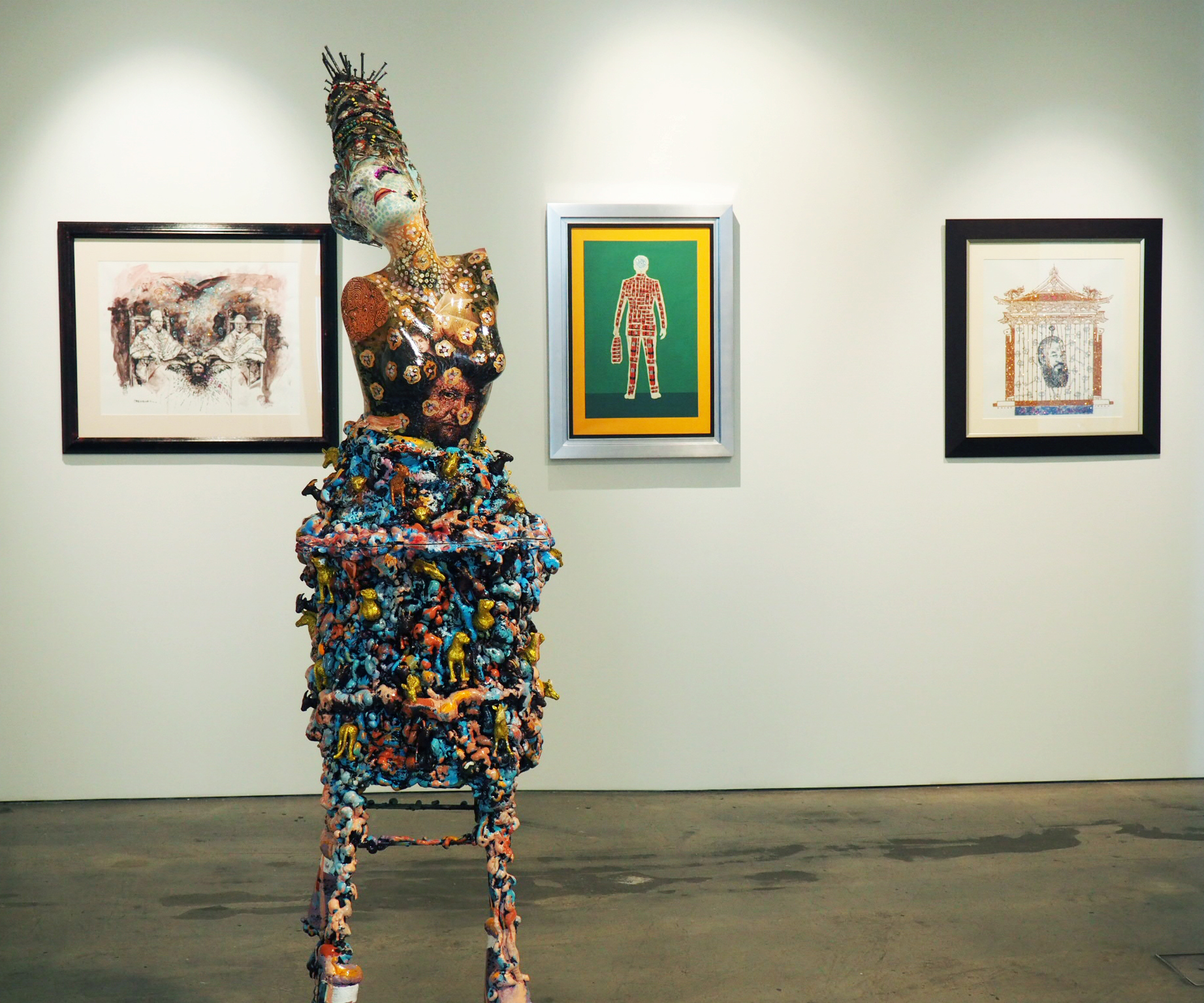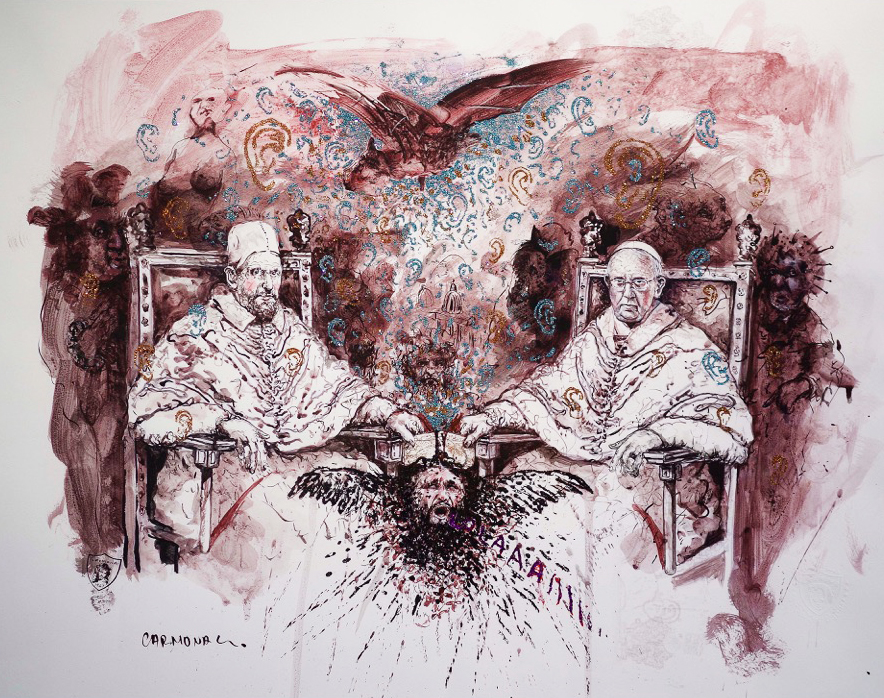When HG Contemporary’s inaugural show is a solo exhibit of acclaimed street artist RETNA’s work, you know it’s a gallery with a distinct point of view. That guiding direction comes mainly from the Chelsea gallery’s director, Philippe Hoerle-Guggenheim, who has been visiting museums since he was four years old, getting carted around the Louvre with his art-obsessed mother and internalizing her penchant for the arts.
Hoerle-Guggenheim opened HG Contemporary in 2014 with the aforementioned RETNA exhibition to incredible acclaim. Since then, he has brought together an eclectic and thoughtful group of artists for a roster of group and solo exhibitions, often with a bold, playful pop culture bent that belies his genuine love for art.
And while the young director has, in fact, been a part of the art world since he was a toddler, the beginnings of his professional career started on a much different trajectory. After graduating from Angila Ruskin University in Cambridge in 2005, Hoerle-Guggenheim went on to work as a financial analyst for Ernst and Young and the Hyatt Corporation.
Art always played a crucial role in the background of his life, however, as he was always hosting events for artists both in the US and abroad and had a personal interest in the secondary art market. It was his participation in the active secondary art market that introduced him to his current business partner and HG Contemporary was born.
We had the pleasure of attending HG Contemporary’s latest exhibition opening last night; “More Was Lost in Cuba” is a diverse selection of Cuban-born Williams Carmona’s latest sculptures, paintings, drawings, installations, and ink drawings. Carmona was born in La Habana, Cuba in 1967 and studied at the Universidad de Bellas Artes in La Habana, Cuba.
Carmona left Cuba in the 1990s because, like many of his contemporaries, he felt the restrictions on his artistic freedoms too big a price to pay to stay in his home country. Carmona moved to Puerto Rico in 1999; relocating to an environment where his social, cultural and economic world views aligned with the prevailing mindset allowed the artist to explore and develop his personal artistic vision freely.
That vision has taken him through many periods of work, the most recent one — and the one on display at HG Contemporary — is something Carmona dubbed “Tropical Surrealism.” Cuba has always been a major theme running through all of Carmona’s work; here, his home country becomes a part of a more universal contemplation of religion, morality and society.
“A rumba, or a guaguanco, an Adam, or an Eve, it’s all the same. It no longer matters what you represent to others, you can shape yourself to be who you want or aspire to be,” Carmona says of his latest works. There’s a sly wit that weaves its way through this exhibit; he’s critical, sure, but with a wink and a nod that takes away any self-seriousness which we loved. We highly recommend checking out the show, which runs through July 16!


